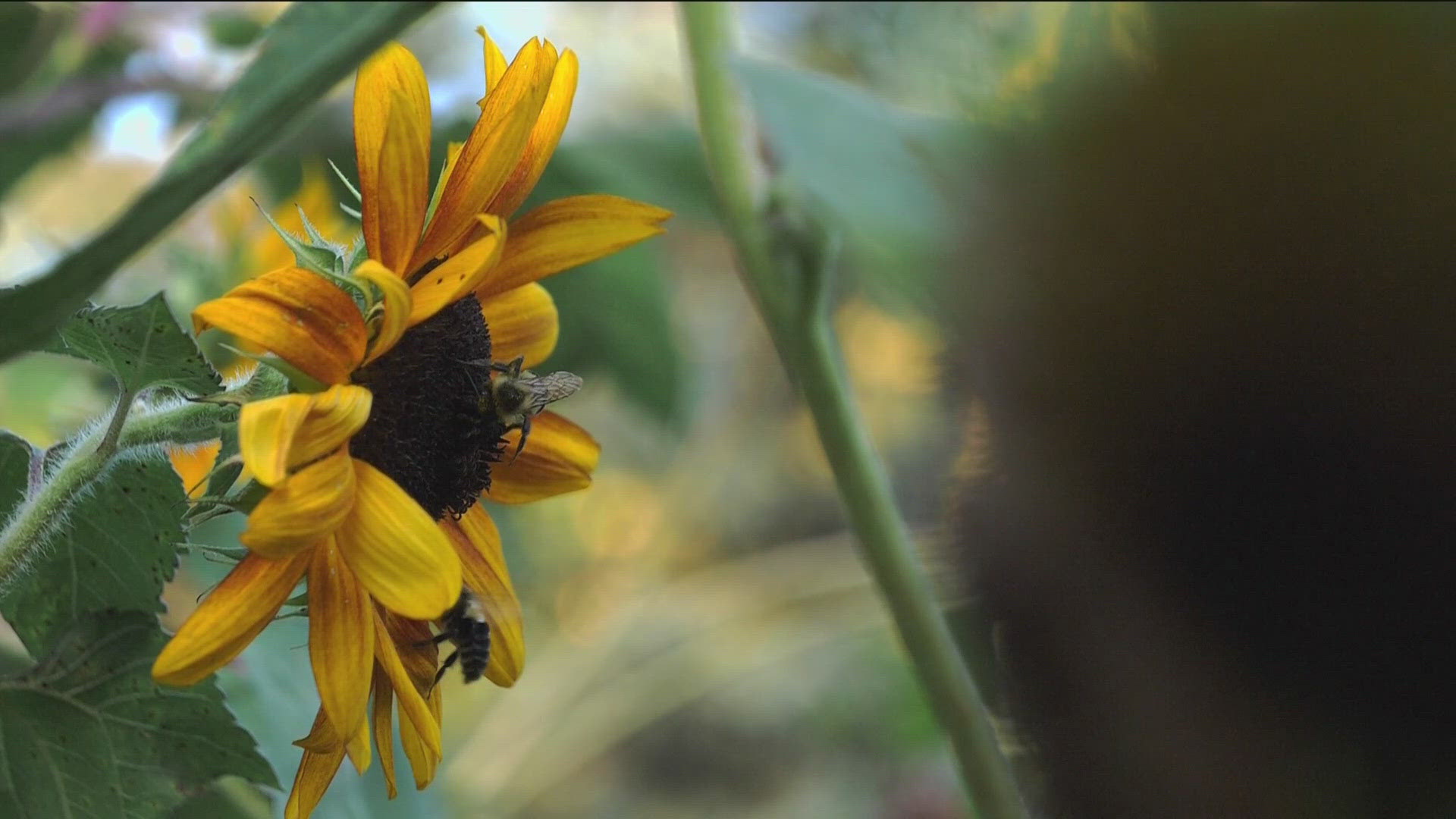ST PAUL, Minn. — Bees and wasps seem to be everywhere as of late, but that doesn’t necessarily mean there’s more of them in the air.
“Based on just one year, we can’t really say if there are more bees or not because pollinator populations fluctuate so much from one year to the next,” said Elise Bernstein, who works at the University of Minnesota Bee Lab.
Bernstein and her colleagues have a theory as to why it feels like bees are buzzing everywhere.
“I think just anecdotally, a lot of us in the field, we’re seeing things kind of shifted a little bit because we had such a wet, long, cold spring that kind of dragged on so things got started a little later, plants were blooming at different times when they usually are. I think for some bees that maybe we would’ve seen earlier in the summer, we’re just seeing later,” Berstein said.
Bernstein said it’s hard to tell how native bee populations are doing.
“For the majority of our bees, we’re not really sure how their populations are doing, you know, a lot of them are really, really tiny and some of them are just out for a really short amount of time, so it takes a lot of really close monitoring over a really long period of time to understand what’s going on with all the bees and pollinators,” Bernstein said.
Even though their population numbers are unclear, Katie Schmidt said she has noticed more bees flying around her St. Paul community garden.
“There are so many bees,” she said. “Over the last couple of weeks, I think it’s really picked up.”
Schmidt and her husband come here to pick their produce two to three times a week.
“We’re growing green beans; we had sweet corn,” she said. “Just being able to come here in this space with the community and have something that you’re growing yourself. Being able to see everything grow from seed to a plant is just amazing.”
But it can be hard to show off her Minnesota State Fair third-place green beans when bees are nearby.
"I had my nieces here a couple days ago and they didn’t want to walk through a certain area because they were like, ‘Oh, my gosh, there are so many bees around’,” she said.
Bernstein said wasps are also easy to spot in September.
“This time of year is when wasp populations — so, like, yellow jackets, the paper wasps, the bald-faced hornets, those type of social wasps — their populations are at their biggest and their food supplies are starting to run out,” she said. “It feels like we’re all of sudden seeing a lot of wasps, but it’s often because they’re just looking for food in different places.”
She said bee and hornet populations will start to decline as the temperature drops.

